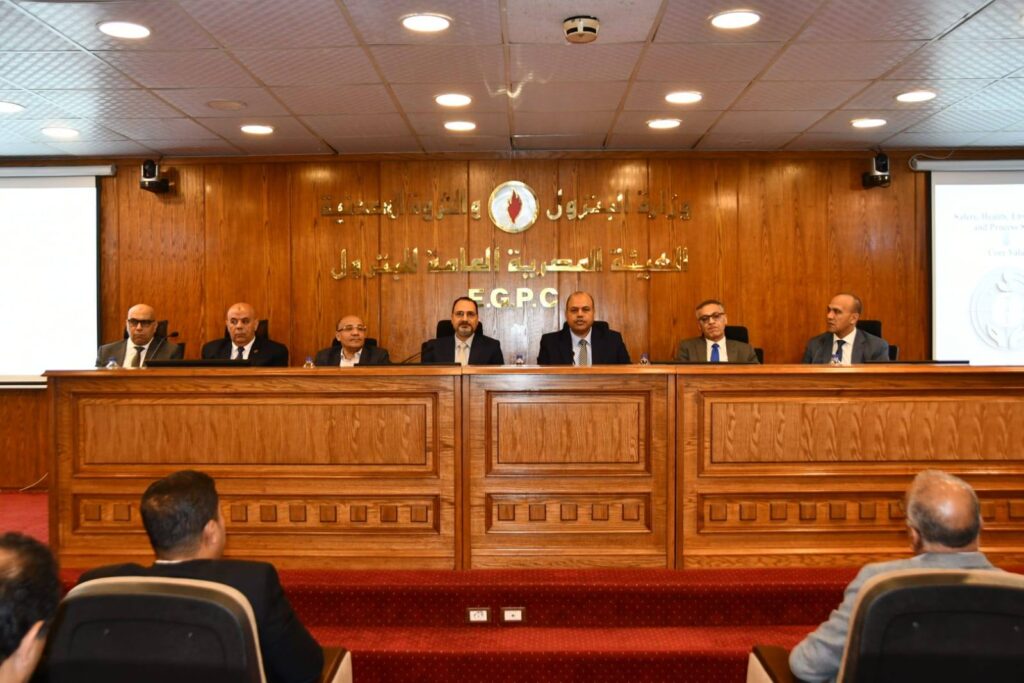The Public Prosecution for Transport and Distribution, along with the Department of Health, Occupational Safety, and Environmental Protection (HSE) at the Egyptian General Petroleum Corporation (EGPC), held its quarterly meeting with companies operating in petroleum product transport and distribution.
The meeting focused on reviewing the companies’ procedures for ongoing development in HSE practices, particularly those related to the transport and handling of petroleum products via tanker trucks.
This comes as part of an integrated plan aimed at fostering more conscious engagement with the system’s human, operational, and procedural components.
During the meeting, Ayman Abdel Badie, EGPC’s Vice Chairman for Transport and Distribution, explained the importance of continuous development and integrated work within the tanker truck transport system. He emphasized leveraging the challenges faced to achieve the necessary development and control, especially given its significant economic importance. Abdel Badie mentioned that this system is a main link in the petroleum industry chain and the primary means of meeting local market demands for petroleum products. He noted that increasing the ability to prevent and reduce accidents within this system would positively impact and bring greater stability to the local market.
Meanwhile, Tamer Ayesh, Assistant Executive Director of EGPC for HSE, underscored the importance of maintaining continuous dialogue and idea exchange across all elements of the system. He stressed the need to raise workers’ awareness of occupational safety and health, aiming to embed it as a core component of workplace culture and daily behavior.
This aligns with the Ministry’s strategy and EGPC’s policy and objectives under the current phase’s motto: “Goal Zero Accidents (No Harm – No Leaks).” To realize this goal, a series of core measures and initiatives have been implemented to strengthen the safety system for transporting petroleum materials by ensuring alignment with global best practices and safeguarding people, assets, property, and facilities.
Furthermore, the meeting reviewed past achievements and challenges that were addressed and overcome, as well as the upcoming work plan in an aim to make a qualitative leap in the safety system for transporting petroleum materials on roads. This is expected to have a positive impact on resource sustainability and operational efficiency, depending on several key factors: the transport system within companies, the driver, the tanker trucks used for transporting petroleum materials, and the roads used for transporting petroleum materials.




